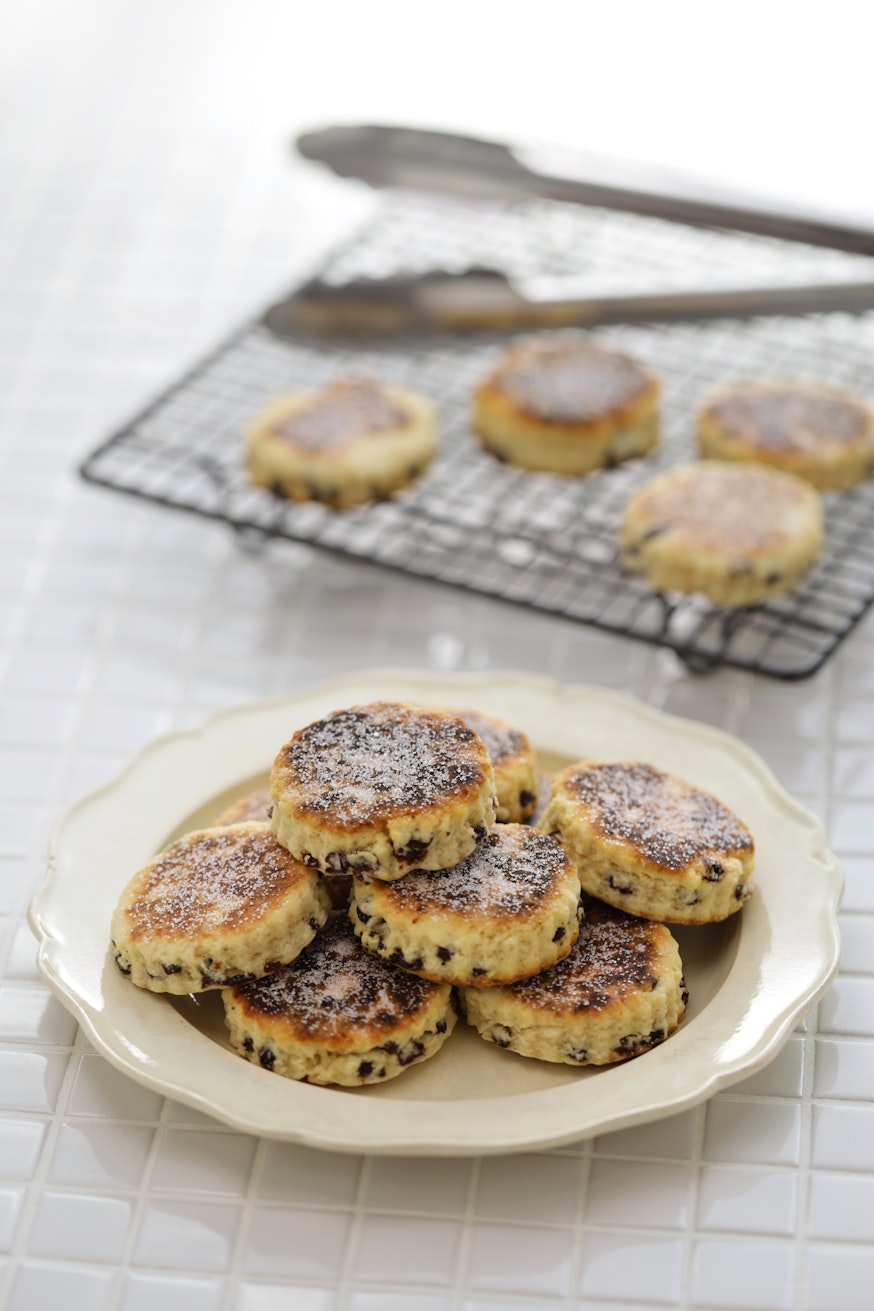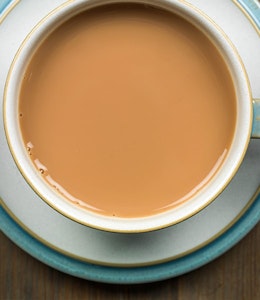What to serve for cream tea…

Cream tea is a British delicacy, but is cream tea the same as Afternoon Tea? And since cream is an animal product how do you make it suitable for vegans? We’re answering all the big questions around this national treasure, and throwing in some top tips too…
Here’s everything you need to know about cream tea:
- What is cream tea?
- What is a Welsh cream tea?
- Can you get vegan cream tea?
- What’s the difference between Devon and Cornwall cream tea?
- What do you serve at a cream tea?
- Is cream tea the same as afternoon tea?
- What does a cream tea include?
- Where does cream tea come from?
- What is the best tea for cream tea?
- What are the best scones for cream tea?
Now let’s find out the answers - plus some cream tea top tips...
What is cream tea?
A cream tea is a light meal or refreshment and type of tea service in which cream features as a component.

Also known by the name of its regional varieties Devon cream tea, Devonshire tea and Cornish cream tea), cream tea consists of tea served in a pot, scones, clotted cream and jam - and sometimes other condiments and accompaniments. Tradition stipulates that the scones should be warm, the cream clotted not whipped and the jam strawberry, but there are many different and modern takes.
Cream tea is popular in and served in many different areas of the UK, but is mostly associated with the Southwest of England.
Allergen alert!
Cream is derived from Milk, one of the 14 major food allergens. Additionally, scones are usually made with wheat flour. Wheat is a Cereal containing Gluten, another major allergen.
Top tip
For cream tea scones with a diameter of 4-7cm are recommended - perfect for placing a good dollop of cream and jam in the centre whilst leaving enough space around the edges.
What is a Welsh cream tea?
Like a Cornish or Devonshire cream tea, a Welsh cream tea includes tea, jam and clotted cream - however instead of scones it includes Welsh cakes. Welsh cakes are a traditional Welsh food made with flour, butter, currants, eggs, milk, cinnamon and nutmeg - sharing several main ingredients with scones, but unlike scones they are cooked on a hot griddle or bakestone. Served both hot or cold, they are generally eaten with accompaniments such as sugar, butter or honey.
Allergen alert!
In addition to Milk and flour (Cereal containing Gluten), Welsh cakes are made with Eggs and currants - a dried fruit which may contain Sulphur Dioxide.

Top tip
Clotted cream is an essential component of cream tea (whipped cream should never be used), because of its rich flavour and thick consistency. If the cream seems runny return it to the fridge and keep there until it sets more.

Can you get vegan cream tea?
Yes, you can get a vegan cream tea - simply by replacing cream (and milk for tea) with a plant-based alternative. Clotted cream, which is traditionally served for cream tea, is thicker and richer than regular cream, so a combination of soy milk and olive oil, or coconut cream might be preferred to regular plant-based milks. Erudus have put together a list of allergen substitutes, which includes alternatives to milk-derived products such as cream and butter (as well as cheese), for everything from baking to drinking with tea. You can read it here.
Top tip
Butter is not traditionally served with cream tea, but can be a great option to have to hand for those who’d like a lighter alternative to cream. Unsalted butter is preferable as it pairs better with jam.
What’s the difference between Devon and Cornwall cream tea?
Devonshire (or Devonian) and Cornish cream teas have the same components - tea, scones, clotted cream and jam, the difference between them is in the way the components are served. In a Cornish cream tea scones are split into halves and each half is spread with jam and then topped with clotted cream. In a Devonshire cream tea the scones are split into halves and then each half is spread with clotted cream and the jam spread on top.
Top tip
90 degrees celsius to 98 degrees celsius is the optimal temperature for serving black tea.
What do you serve at a cream tea?
At a cream tea you serve a pot of tea with warm scones, clotted cream and strawberry jam.
Some versions of a cream tea might also include milk for the tea and butter for scones, but items such as cakes, pastries, finger sandwiches and champagne would be served as part of Afternoon Tea rather than cream tea. You can find out more about Afternoon Tea here.
Top tip
Homemade scones are best, but when making them it is important not to overwork the dough. Rolling the dough too much gets rid of the air pockets that give good scones their fluffiness.
Is cream tea the same as afternoon tea?
Cream tea is similar to Afternoon Tea, but with fewer components.
Cream tea consists of tea and scones (with clotted cream and jam), whilst Afternoon Tea is more substantial and traditionally includes both sweet and savoury food such as finger sandwiches, cakes and pastries in addition to scones.
Top tip
If making scones, after they have been pressed out using the cutter turn them upside down when placing them on the baking sheet. It will help them to rise.

When do you serve cream tea?
There is no set time for serving cream tea but half 11am- midday is popular (similar to elevenses), as is the traditional Afternoon Tea slot between 3pm and 5pm, in which the tea is served as a light refreshment or snack between lunch and dinner.
Top tip
Whilst strawberry jam is traditionally served with cream tea, other varieties of jam work too.
Raspberry jam has a lightness that balances out the richness of other flavours, and blackcurrant jam has sharpness that contrasts intensely with clotted cream.
Where does cream tea come from?
Whilst there is no certified origin for cream tea, but most people place its beginnings in the Southwest England regions of Devon and Cornwall, where it is very popular. A “Cornish cream tea” was first referred to in print in an edition of The Cornishman newspaper in 1931.
Top tip
Clotted cream is considered essential for a traditional cream tea, but at a pinch crème fraîche can be used as an alternative. In fact, crème fraîche is great for serving with a savoury scone such as cheese, as it has less sweetness and more tang.
What is the best tea for cream tea?
Black tea is the best and most traditional type of tea for cream tea, with the optional addition of milk. English Breakfast tea and Earl Grey are very popular choices of blend, as they are strong and hold up against the richness of the clotted cream and sweetness of the jam.
It is important to make sure the tea is loose leaf, as loose leaf tea makes for a cleaner flavour and is typically of higher quality than a tea bag, and the tea should be served in a pot to allow optimum brewing time.
Top tip
Honey is a great option for cream tea - not only can you put it in tea instead of sugar, but it tastes great on scones too.
What are the best scones for cream tea?
You can use any type of scone for cream tea but plain scones are the go-to and a safe bet - as they will always complement the other components.
Fruit scones, which are served at Buckingham Palace every summer, are also popular, whilst cheese and rosemary scones add a savoury dimension to the cream tea. Scones should be served warm but not toasted.












